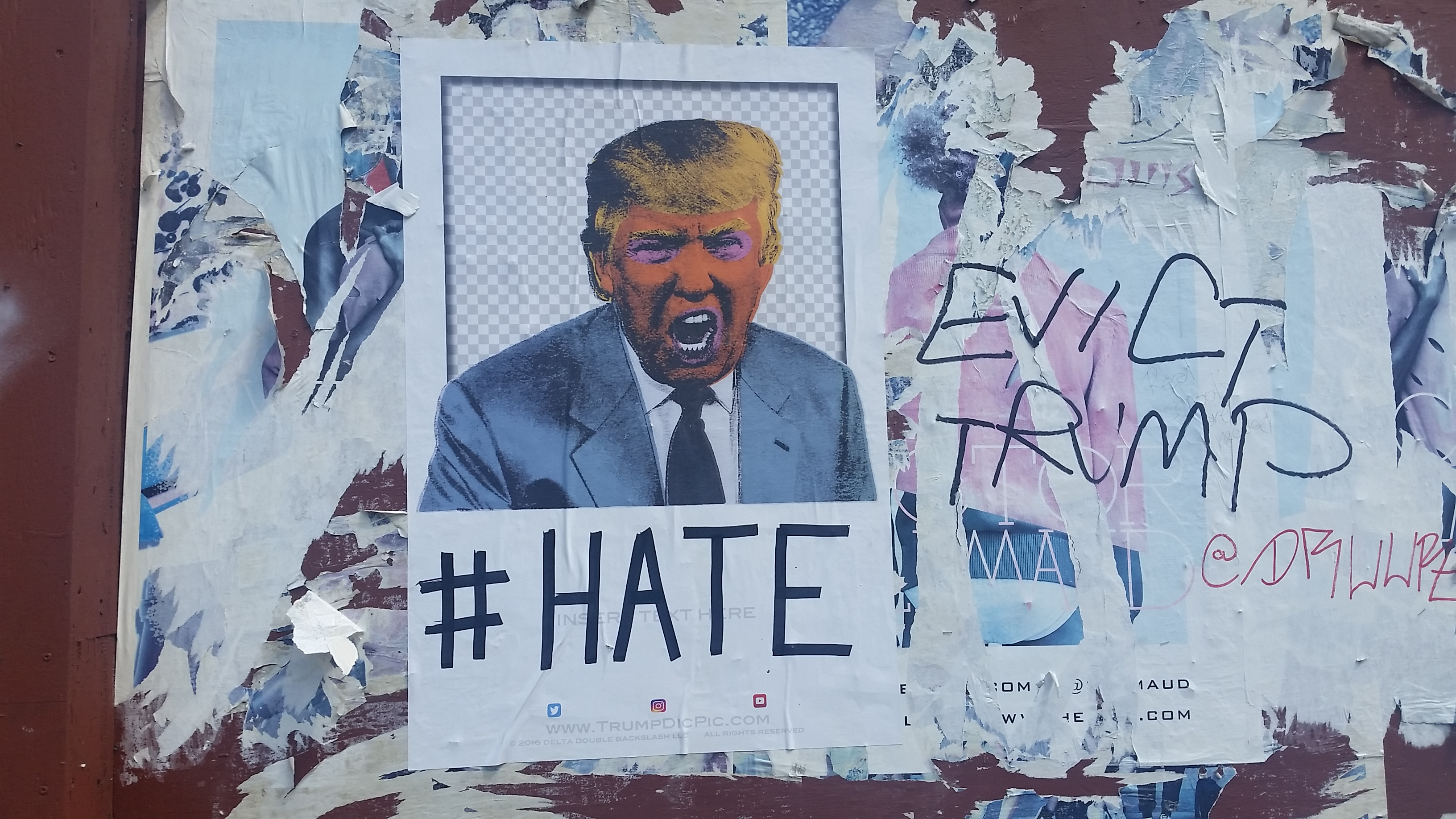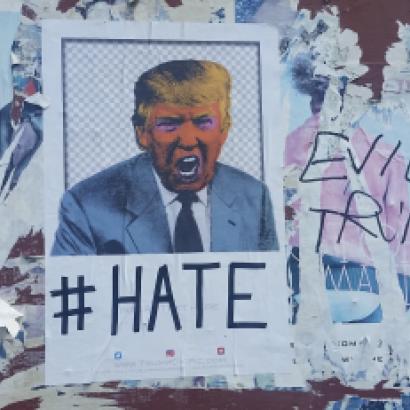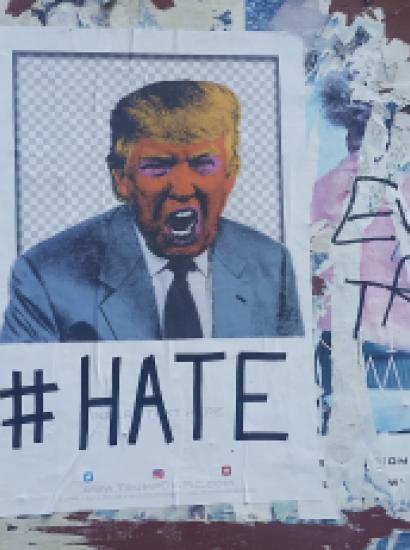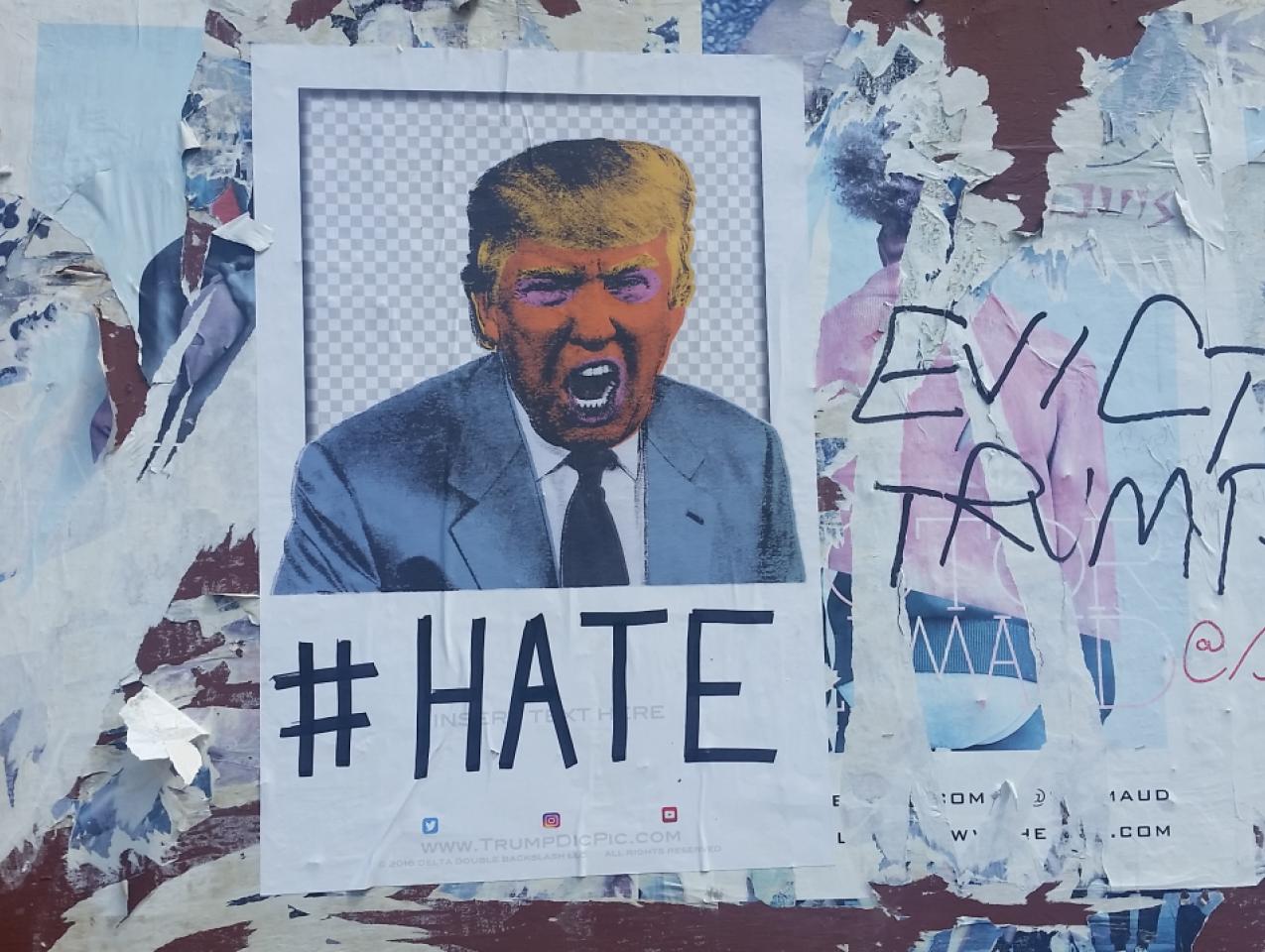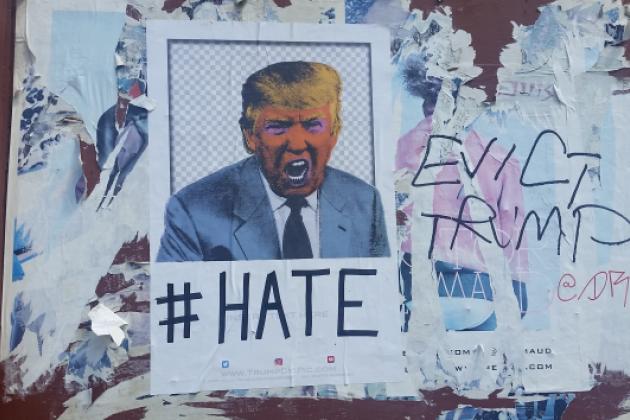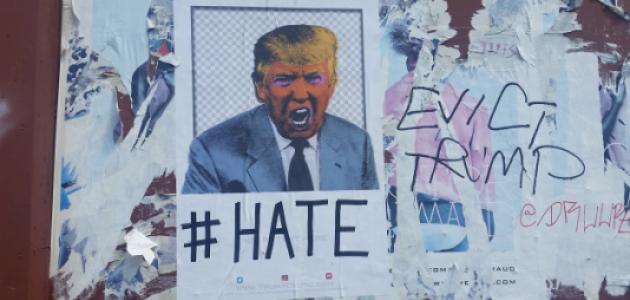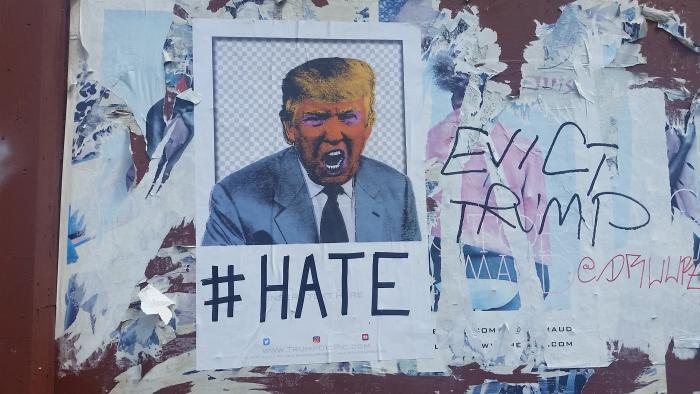My Hoover Institution colleague Morris Fiorina has recently written that I am unduly pessimistic in my appraisals of a currently divided America. He cited two essays I wrote, one a Tribune Media Services syndicated column, the other a National Review online essay. Both were published before the recent national hysteria over Judge Brett Kavanaugh’s Supreme Court confirmation hearings.
In those essays, I had indicated that the polarization within the United States is growing ominous. Given relatively new force-multipliers—such as the asymmetrical consequences of globalization, the rise of social media and instant global communications, red-blue-state geographical self-selection, the Obama and Trump presidencies, and massive illegal immigration—I suggested that we may be on a dangerous trajectory. In my view, the resulting escalation could exceed the factional differences that were ultimately resolved peacefully in the 1930s and 1960s, and instead might approach those of 1860–61.
Before answering Fiorina’s counter-arguments that I am too gloomy, I first would like to address, sine ira et studio, a few of his initial assumptions. First, he locates our disagreement in my own supposed role as an “active combatant in today’s political wars.” And thus, apparently, my “impressions” should be placed in just that partisan and politicized context. In contrast, Fiorina is self-described as a “data guy” and a “noncombatant.” I take that to mean that the disinterested social scientist Fiorina can better assure us of “grounds for feeling much more sanguine about the state of our country.”
Perhaps. I often write op-eds that seek to warn or reassure an audience that contemporary challenges have antecedents in the past, and do so by drawing on historical, literary, and cultural allusions. But I am not a mere political “combatant” trafficking in “impressions,” but an academic historian who has written a number of scholarly books and comprehensive studies of the ancient and modern world, from the Peloponnesian War and the rise of the Greek city-state to the nature and origins of war, and, most recently, World War II.
Data is essential to all those histories that draw on literary, epigraphical, archaeological, and historical footnoted sources, many of them untranslated and accessible only in ancient and modern foreign languages. I think Fiorina would agree that within the confines of the genre of the op-ed, limited by considerations of word length, the popular nature of the audience, and its journalistic editing and format, I cannot draw on the same sort of citations and documentation that I have in my scholarly essays and books. But I remain a historian, for all my seemingly demotic excursions into journalism.
Second, “data” is not always the province of some abstract discipline that is, in turn, proof of disinterested scientific inquiry. We should know this from the past abuse of “data-driven” research to substantiate pseudo-sciences like phrenology, astrology, and scientific racism, all of which variously claimed that their analytics were unimpeachable. Numerical quantification does not necessarily trump the use of historical allusion, common sense, or contemporary custom and practice. Instead “data” is an often inexact tool. And it is subject to a similar range of errors, wrong methodologies, hubris, and partisanship that the historian deals with in analyzing evidence from the past.
Especially worrisome is the recent habit of social scientists and statisticians of claiming near-scientific authority through purported numerical precision. This is certainly not warranted by the wide variances in the manner that questions are asked; in the size and accuracy of samples taken; and in the problematic habit of comparing how those in the past answered the same questions posed in the present—as if culture is static and does not affect attitudes and protocols that warp responses across time and space in ways that we are not quite sure about.
A minor recent example of faux statistical exactitude: on the Tuesday morning of the 2016 Election Day, we were assured by The New York Times that Donald J. Trump had either a 15 percent, 8 percent, 2 percent or less than 1 percent chance of winning the election, based on the Times’s tracking and aggregation of various scientific models and polls. The supposed master of electoral analytics, Nate Silver, was criticized as too pessimistic by many Clinton supporters for stating that Trump had on Election Day a 29 percent chance of winning the Electoral College. Such precise percentages stamped inexact methodologies with a precision they certainly did not deserve—and yet it was likely intended to do so to instill public confidence in such purportedly irrefutable “science,” and in those who deploy it.
Third, Fiorina, in the midst of citing numbers drawn from studies, surveys, and polls, also seems to agree with this skepticism. He finishes with welcome advice, urging us to get out among the people, and trust our senses, as we soak up anecdotes and impressions: “The American citizenry has worked through these kinds of problems in the past (most recently in the 1960s) and I am optimistic that they will continue to do so, despite the efforts of members of the political class to keep political controversies alive and allow societal problems to fester. Whenever you feel discouraged about America, turn off CNN, log off your computer, and go walk the aisles of Walmart.”
I agree—and try to do just what Fiorina advises, and thus commute weekly to Stanford from my rural home in one of the poorest areas of the state in southwestern Fresno County, about 2 miles from a Walmart that I in fact visit biweekly. But what I see there, and in adjoining parking lots, quite candidly sometimes does worry me—although not as much as the recent Norteños gang shoot-out across the street in which my 65-year-old twin brother and neighbor was nearly caught in the crossfire, or the corpse which my wife and I discovered two years ago in our orchard.
So I try to aggregate historical examples, contemporary news, data, and personal anecdote by visiting and talking to all sorts of Americans from all walks of life. Yet the two essays cited by Fiorina were not pessimistically resigned to civil strife in their description of growing fault lines among Americans. They were instead written to cool passions, and to anticipate where we might be headed if we did not take a step back:
“Will America keep dividing and soon resort to open violence, as happened in 1861? Or will Americans reunite and bind up our wounds, as we did following the upheavals of the 1930s Great Depression or after the protests of the 1960s? The answer lies within each of us. Every day we will either treat each other as fellow Americans, with far more uniting than dividing us, or we will continue on the present path that eventually ends in something like a hate-filled Iraq, Rwanda or the Balkans.”
As to Fiorina’s more detailed criticisms, of course, those who both deliver and massage the news are a small minority of the population. And those who could be defined as news junkies who are glued to politicized newscasts and social media are also a very small minority. So are political foot-soldiers.
Yet most people do get their “news” from somewhere, most likely through absorption from popular culture. If recent polls accurately suggest sharply divided and incompatible views over the Kavanaugh hearing, that does not mean responders are without some sort of access to such information.
The vast majority likely aggregate news of the hearings not by watching it or listening to it or reading about it. They instead soak it up through anecdote, second- and third-hand telling, conversations with friends and coworkers, and bits and pieces on the car radio and 30-second updates on TV between entertainment and sports fare. Yet those fragments and abbreviations of information ultimately are predicated on, and find their fonts in, polarized cable and network coverage, the Internet and social media, and radio, where there is a new zealotry and advocacy that reflects radical cultural and technological changes, ranging from the rise of the Internet, social media, 24/7 cable news, and upheavals brought about by everything from globalization to changing social mores and massive illegal immigration.
It is now difficult not to witness political sermonizing in popular culture in a fashion not seen in the recent past. The Oscars, Grammys, Hollywood movies, stand-up comedy, and professional sports were never devoid of politics, but they were not perceived as all-political. Such current ideological saturation of entertainment might explain why many of these venues are suffering losses in audiences, of which political weariness may be one contributing cause, and polarization and anger another.
Historians often cite the 1856 caning in the Senate chamber of northerner Sen. Charles Sumner by South Carolinian Representative Preston Brooks—roughly five years before the outbreak of conflict at Fort Sumter—as an iconic warning that previous heated rhetorical differences would increasingly likely be resolved only through violence. In our own era, there was a “Brooks moment” when Bernie Sanders-partisan James Hodkinson tried to take out a cadre of 24 Republican congressional representatives at an Alexandria, Virginia, baseball game, a shooting that resulted in the near-death of Republican Majority Whip Steve Scalise. Physical confrontations such as the recent cornering of Sen. Jeff Flake in a Senate Elevator or California Representative Maxine Waters’s call (“If you see anybody from that cabinet in a restaurant, in a department store, at a gasoline station, you get out and you create a crowd, and you push back on them, and you tell them they’re not welcome anymore, anywhere.”) have had real consequences. I do not recall guards ever being needed before, as they sometimes now are after the Kavanaugh hearing, to escort senators to congressional hearings.
In the last decade-and-a-half, we have seen the growth of a new genre of presidential assassination chic, voiced in mainstream venues such as novels (e.g., Nicholson Baker’s 2004 Checkpoint), films (the 2006 “docudrama,” Death of a President), and newspapers (in Charlie Brooker’s 2004 Guardian piece) that imagine, or even hope for, the assassination of a sitting president. These are not isolated incidents of wackiness. Google “Johnny Depp and President”…
Today’s university campuses would likely not tolerate a free-speech area analogous to what was originally conceived by Mario Savio at Berkeley in 1964, in which anyone could express unpopular opinions. Scientists fear to express openly their skepticism about man-caused global warming and its government remedies, or socially constructed gender orientations, without real fears of career damage. The recent Kavanaugh hearings reflect that some of the nation’s most powerful elites do not really believe that traditional constitutional norms of due process, or at least its spirit that emanates from the courtroom—vigorous cross examination, the right of the accused to be presumed innocent, adjudication of doubt by witnesses, testimonies, and physical evidence, the inadmissibility of hearsay, and the idea of a statute of limitations—should apply in the matter of alleged sexual harassment.
So, we do not always need reliance on data to sense recent polarizing developments have worrisome precedents. Nearly 500 American cities or jurisdictions have declared themselves entirely exempt from the full enforcement of U.S. immigration law. The obvious parallels are the states-rights efforts in the turbulent 1960s to nullify federal integration edicts, or perhaps even the antebellum nullification crises.
Statistics do report that in actual numbers and percentages, America is currently experiencing a near-record number of immigrants, both in quantum (ca. 60 million) and percentages (14.7 percent). I agree wholeheartedly with Fiorina that the engine of the melting pot, while damned in the abstract, still works in the concrete. And I can attest that Americanization (a now near-pejorative word) continues both in my own racially mixed extended family, and from what I witnessed in 21 years of teaching classics to mostly immigrant and first-generation American students.
But the numbers of arrivals is now so high, and those who now come without legal sanction so numerous, that there is increasingly less margin of error when assimilation, integration, and intermarriage are so often (by our own institutions) considered passé, at least in comparison to the attractions and career enhancements of the salad bowl and identity politics.
To conclude with some “data.” In a December 2017 Pew Research Center poll, an “overwhelming majority (86%) of Americans” stated that conflicts between Democrats and Republicans “are either strong or very strong,” much more so than over traditional divides of race or class. The point is not to suggest that the Pew poll is necessarily accurate or proves that worse is to come; it is only to warn that, increasingly, Americans may see their contrasting agendas with a new degree of passion and less confidence in the possibilities of compromise. More recently, Michigan State professor Zachary Neal’s data suggested that political parties had become the most estranged and polarized in modern history: “What I’ve found is that polarization has been steadily getting worse since the early 1970s. Today, we’ve hit the ceiling on polarization. At these levels, it will be difficult to make any progress on social or economic policies.”
Popular culture can certainly provide a much-needed veneer of commonality in language, fashion, and habit. But without a commitment to shared values, a common agreement on constitutional norms, allegiance to the rule of law, and some deference to collective American traditions and customs, factions that superficially seem similar in their language and habits might devolve into violence of the sort now associated with Antifa or attacks on invited speakers to college campuses (or even on congressional representatives).
The lesson from the American Civil War and the French Revolution, the rise of Nazism in Germany or of Bolshevism in Russia, is not that clear majorities of partisans and countless news junkies are needed to foment extremism and tear apart a country. Instead, it is that zealous and sometimes warring tiny minorities can escalate tensions, nullify opposition, and bully the silenced majority to sanction--or at least not object to--the violence by which they eventually make their illiberal agendas go mainstream.
GET MORE commentary from VictoR Davis Hanson.
Hanson explains the fascinating history of how both factions trace their roots back to Roman times - the urban radicals who favored equality, and the rural traditionalists who favored liberty. You'll learn the important parallels between these ancient movements and their modern counterparts in both progressives and conservative populism.
Simply complete the form below and we'll send you Dueling Populisms now.








